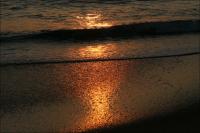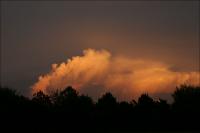Environmental issues
Next Entries »Every day is Earth Day
Tuesday, April 22nd, 2008
Caring. It’s that simple.
For facts about Green Anoles and other reptile care and conservation: http://nationalzoo.si.edu/Animals/ReptilesAmphibians/Facts/FactSheets/Anole.cfm
The changing state of the oceans
Tuesday, April 15th, 2008
Bull Sharks swim overhead in a 40 foot long tunnel in the main floor Mundo Maya exhibit at the Dallas World Aquarium.
Environmental issues are emotional issues. Groups like Greenpeace work aggressively to protect the future of our planet. It’s one way to get the point across, but if we’re talking about changing the habits of the masses, I believe a more gentle approach is more effective. As one who was most assertively involved promoting care for the planet about 20 years ago when developing and selling Original Earthbags, first-hand public reactions and feedback demonstrated that negativity toward the human species does not inspire or motivate some of us to take action; in fact it can even be detrimental to the cause.
There are small things each of us can contribute at any level, habit and practices which, by now most of us are aware of. Zoos, major city aquariums, botanical gardens and similar public spaces naturally affect an awareness of ourselves in relation to Earth and her creatures in a way that permanently affects our perception of life in general. We start incorporating more mindful habits because we want to, not because we are being told we should.
For information about the changing state of the oceans, here is a link to a petition gathering support to increase marine reserves.
Peace On Earth
Tuesday, December 11th, 2007
Peace On Earth, pen on paper.
North Carolina
Monday, October 1st, 2007
 Alain and I flew to North Carolina for three days ( a little business trip and I tagged along—he threatened to take my camera with him and I was sure I could not manage without it!) We drove around the eastern countryside between Raleigh and Washington (NC) through old, old towns (it takes a looong time for wooden doors to shred, and a looong time for conditions to be just right for vines to sprout then twirl round and round, entwined and squished between panes of glass!) …old, old farms: tobacco, cotton, peanuts.. and an interesting gas station.
Alain and I flew to North Carolina for three days ( a little business trip and I tagged along—he threatened to take my camera with him and I was sure I could not manage without it!) We drove around the eastern countryside between Raleigh and Washington (NC) through old, old towns (it takes a looong time for wooden doors to shred, and a looong time for conditions to be just right for vines to sprout then twirl round and round, entwined and squished between panes of glass!) …old, old farms: tobacco, cotton, peanuts.. and an interesting gas station.
 There is a lot of history in NC – fossil, human/settlers and Civil War history. We stayed at Kitty Hawk (first flight – Wright bros.) and walked the shores at various places along the narrow coast of the Outer Banks. We watched the sun rise and dolphins feed – too far away for good photos, even with the telephoto. As soon as the sun rose they swam away.
There is a lot of history in NC – fossil, human/settlers and Civil War history. We stayed at Kitty Hawk (first flight – Wright bros.) and walked the shores at various places along the narrow coast of the Outer Banks. We watched the sun rise and dolphins feed – too far away for good photos, even with the telephoto. As soon as the sun rose they swam away.
Along Cape Hatteras, groups of Grackles ate ripe grass seeds, bouncing up and down on the stems, their bodies too heavy for the tall grasses.
On Pony Island a large sand crab tried to buff up and look tough, but it was quite vulnerable there out in the open; all the other crabs scurried into holes but this one stayed, trying to hide in footprints, which offered no protection if we had been birds looking for a hearty meal.
Great fun to watch the behavior for a while. It’s clearly outlined crab-shaped shadow following it everywhere, creating a few graphic photos that are perfect resource material for drawings and paintings but do not stand alone as good photography because it was moving so fast.
Just off the 2 1/2 hr. long ferry at Swan Quarter, and sunset with a short, wide rainbow after a storm that we managed to escape and watch from the better side.
NO OLF – we were curious about this sign in many people’s yards. The following website shows a video describing how the U.S. Navy has purchased over 30,000 acres of land near the eastern North Carolina coast, planning to move their pilot training program from Virginia.
Part of the huge controversy is that over 75 families would be forced to leave their homes, many of them farming that land for generations. The human issues are enough, but the cause and effect on the wildlife and ecology would be drastic and irreparable. Thousands of ducks and large flocks of snow geese that feed in the area annually would no longer have sanctuary. The large birds would also be a danger to the jets.
http://www.youtube.com/watch?v=3XDmC1LD1Kc
Next Entries »






